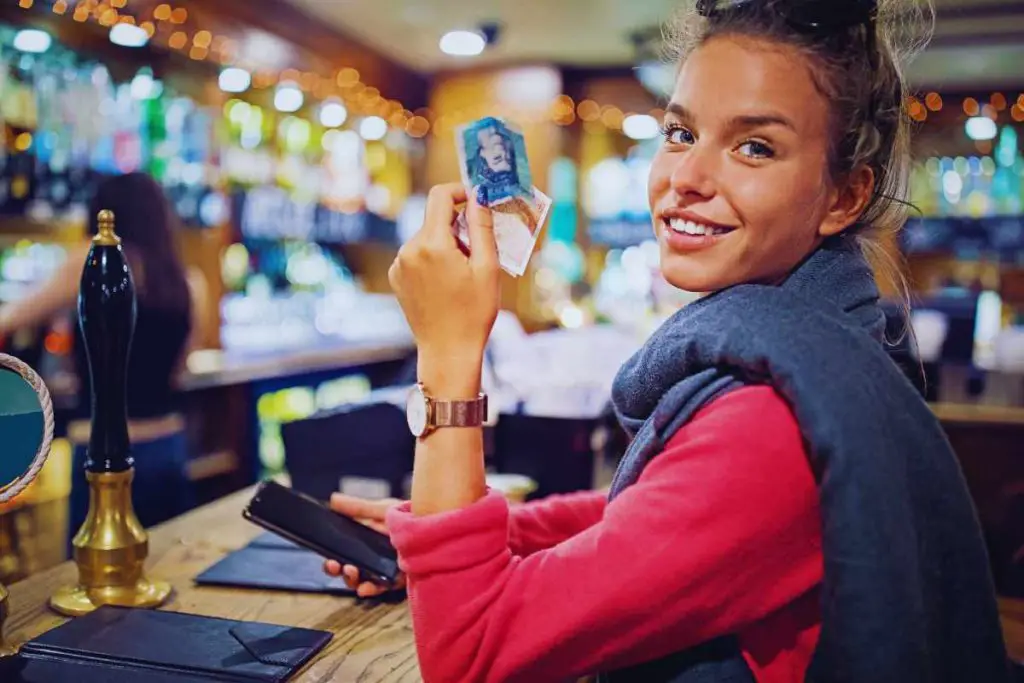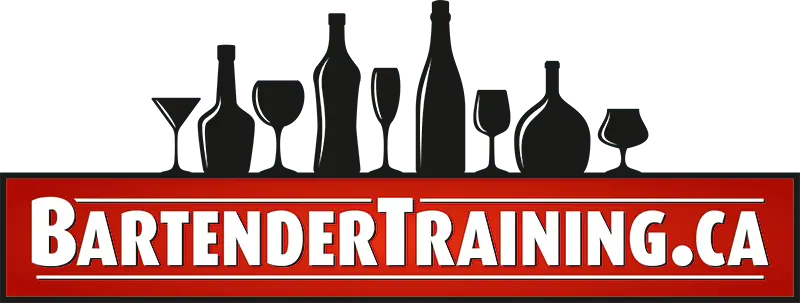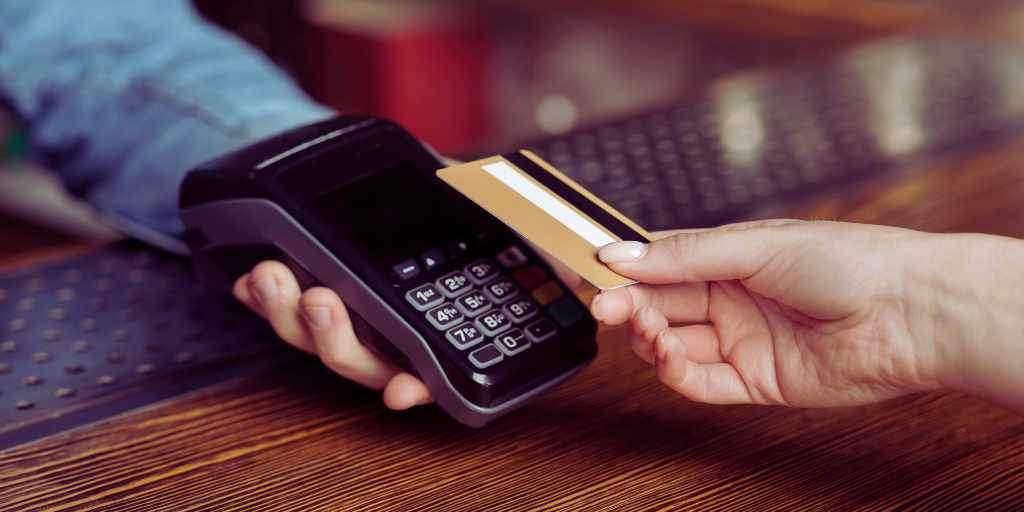A bar tab is an arrangement common in many drinking establishments that allows customers to accumulate the cost of their drinks and pay for them all at once rather than individually. Establishing a tab is often more convenient for patrons and staff, as it streamlines transactions into a single payment event. Typically, bars require patrons to provide a credit card, which the bartender keeps secure or registers in their system until the tab is closed.
Maintaining a tab throughout an evening out enhances the customer experience by simplifying payments and reducing the frequency of transactional interruptions. Customers often appreciate the ease with which they can order drinks without the immediate need to pay after each order. Yet, it’s important for patrons to keep track of their consumption to avoid unexpectedly high bills. Payment for the final bill often includes tips and may be settled through the initial card authorization or another payment method agreed upon with the establishment.
Technological advances have improved the security of opening a bar tab, with many bars opting for systems that pre-authorize a card or integrate seamlessly with mobile payment platforms. Bar tab etiquette includes timely payment and ensuring that tipped staff are compensated for their service. While bar tabs are largely beneficial, customers should also know potential security risks and best practices when leveraging this convenience.
Key Takeaways
- Bar tabs provide a convenient way to manage multiple drink orders during a customer’s visit to a bar.
- Customers should monitor their orders to control their tab and avoid overspending.
- Modern bar tab systems offer enhanced security and streamline the process for both customers and staff.
How Do Bar Tabs Work?
Setting up a bar tab involves a few key steps to ensure a smooth experience both for the customer and the establishment. The process typically requires opening a line of credit using the customer’s credit card (some establishments might also require identification) and an understanding of the pre-authorization process.
Opening a Tab
To open a tab, a customer typically hands a credit or debit card to the bartender. The customer’s credit card remains with the bartender, signalling the customer intends to accrue charges on a single bill to be paid at the end of their stay.
Pre-Authorization Process
Pre-authorization is a critical step when setting up a bar tab. This process involves placing a temporary hold on funds in the customer’s bank account, which secures payment for future charges. This authorization hold ensures the customer has sufficient funds to settle their bill and is not charged until the tab is closed.
Identification and Security
For the security of the transaction, identification is often required when opening a tab to match the name on the credit card or debit card. This measure builds trust and protects against potential fraud.
Some Pre-Authorization Myths Debunked
Contrary to common myths, pre-authorization does not charge the account instantly; instead, it simply reserves a set amount to cover potential costs. Bars may adjust the pre-authorization amount based on average spending trends to ensure sufficient funds are available.
Managing Your Tab
Properly managing a bar tab ensures that patrons can enjoy their evening without the interruption of constant payments. It provides a seamless experience, allowing individuals to track and settle their bill for drinks and food only at the end of their visit.
Ordering Drinks
To begin a running tab, a customer typically hands over a credit or debit card to the bar staff, which may be pre-authorized to confirm sufficient funds. When someone orders drinks, the staff adds these to their running bill, allowing for a continuous sales tally without repeated payments after each round. It’s essential to communicate clearly with the service staff each time a new order is added to avoid any confusion.
Monitoring Your Bill
Patrons are advised to occasionally check in with the service staff to monitor their running bill. This can involve asking for a printed summary or viewing the tab on a digital system, if available. Monitoring helps prevent surprises at the night’s end and assists in managing one’s budget.
Adding Food Orders
If a patron adds food orders to their tab, it follows the same process as for drinks. One should inform the service staff that they would like to include food on their running tab. Some establishments may separate food and drink tabs, so clarity in communication ensures that all items are billed correctly.
Payment and Tips
In the world of bars and nightlife, managing the financial exchange is a straightforward yet essential process. Key to this are payment methods, the approach to tipping, and settling the bill itself. Customers and bartenders benefit from understanding these aspects to ensure a smooth transaction process.
Settling the Bill
At the end of a night out, customers settle the bill for the tab they’ve accumulated. Bars typically require a credit or debit card to hold as security when a tab is opened, and the final amount is charged to that card when customers are ready to leave. Sometimes, customers can pre-authorize a specific amount on their card to expedite the closing process.
Tips and Gratuity
Gratuity is a gesture of appreciation for the bartenders’ service throughout the patron’s visit. While the tipping percentage can vary, it is typical for patrons to tip between 15% and 20% of the total bill amount. Some establishments include gratuity in the bill for large groups, whereas others leave it to customer discretion. Tips can be added to the card or given in cash, and they play a significant role in bartenders’ earnings.
Payment Methods
Bars usually accept various payment methods, including cash and cards. While paying with a credit or debit card is common, some bars may also accept mobile payments or cash. It’s important to note that when opening a tab, most establishments will only accept a card to track the tab through their transaction process. Cash payments typically do not allow for an open tab, but patrons can pay for each drink individually.
Technological and Security Considerations
As bars streamline operations with technology, understanding the security measures and technological tools is essential. Effective management of bar tabs integrates point-of-sale systems with secure processes to protect the establishment and the patron.
Point-of-Sale Systems
Bars typically utilize sophisticated point-of-sale (POS) systems to efficiently manage the customer’s tab. This software facilitates the opening and closing of tabs and tracks sales and inventory in real-time. Point-of-sale software has become a critical component in the hospitality sector, enhancing the accuracy and speed of service.
The Benefits of Implementing Tabs in Your Bar Business
Implementing tabs through a POS system benefits bars by encouraging larger sales and fostering customer loyalty. When patrons open a credit line with the establishment, they are likely to spend more per visit. By reducing transaction times, bars can serve more customers with greater efficiency.
Data Encryption and Fraud Prevention
Security is paramount when handling customers’ financial data. Modern POS systems come with data encryption to shield sensitive information. Encryption protects against data breaches and helps prevent fraud. Bars must also follow best practices in online banking and proactively manage potential issues, such as chargebacks.
Best Practices for Managing Bar Tabs
To manage bar tabs effectively, it’s crucial to enforce best practices:
- Card readers should be equipped to handle EMV chips for added security.
- All transactions should be monitored to detect any unusual activity, helping prevent fraudulent charges.
- Staff should be trained on POS system features, especially pre-authorization and closing tabs, to ensure customer cards are not misused.
By adhering to these practices, bars can safeguard their operations and provide a secure environment for patrons to enjoy their experience.
Bar Tab Etiquette and Best Practices
When it comes to bar culture, understanding bar tab etiquette is crucial for patrons to ensure a pleasant experience for themselves and those around them. Patrons who open tabs enjoy the convenience of not paying for each drink individually, thus contributing to a seamless experience.
- Opening a Tab: When customers arrive, it’s common practice to hand over a credit card to open a bar tab. This streamlines the workflow for bartenders and gives patrons peace of mind, not having to keep track of multiple transactions.
- Ordering Drinks: Regular customers benefit from this system, allowing them to order drinks throughout their stay without interruption. For customer service, bartenders must maintain an accurate tally to ensure that the final bill reflects the consumed beverages accurately.
- Closing Out: As a sign of good etiquette, patrons should close their tabs before leaving the bar by signalling a bartender or returning to the bar to settle up. This respects the establishment’s time and other patrons waiting to be served.
- Tips: It is customary for guests to include a tip when they close their tab. The standard is typically between 15-20% of the final bill, reflecting the level of service the bartending staff provides.
The camaraderie between regulars and bar staff is often reinforced through understanding and adherence to tab etiquette. By following these guidelines, customers can enjoy their night out while also supporting the establishment’s efforts to provide excellent service.

Frequently Asked Questions
In this section, readers will find answers to common questions regarding how bar tabs work, including managing orders, procedures for forgotten tabs, and the nuances of payment authorization.
How do bartenders track individual customer orders on a bar tab?
Bartenders typically use a point-of-sale (POS) system to track each drink added to a customer’s bar tab. They maintain a running total that only gets settled when the customer decides to close their tab.
What are the common practices if a customer forgets to close their bar tab?
When a customer forgets to close their bar tab, most establishments will automatically charge the card they provided when opening the tab, including an added gratuity, if applicable.
Are there standard procedures for automatically closing bar tabs at the end of the night?
Yes, many bars have standard procedures to automatically close bar tabs at the end of the night, usually by charging the provided credit card on file for the total amount due.
What is incremental authorization? And does a bar need it?
Incremental authorization is a process for bars to secure additional pre-approved funds beyond the initial authorization when a customer’s purchases exceed the pre-authorized amount. This ensures the bar can collect payment for all charges incurred.
What is the typical process for setting up an open bar tab for an event?
To set up an open bar tab for an event, the host typically provides a payment method upfront, and limits may be set for the total expenditure or types of beverages served.
Can you explain the difference between an open bar tab and individual drink purchases?
An open bar tab allows customers to accumulate charges continuously before making a lump sum payment, while individual drink purchases require immediate payment after each order.
What should I do if a customer leaves without paying their bar tab?
Establishments usually follow a protocol to attempt to contact the customer for payment and, as a last resort, charge the payment to the card left with the bartender.
What types of payment methods are generally accepted when opening a bar tab?
Credit cards are the most commonly accepted payment method for opening a bar tab, although some establishments may also permit debit cards or mobile payments.
How does an open bar tab work?
It’s ‘opening’ a tab for a table and entails asking a waiter to add all the drinks you ordered to be ready for payment. It’s typically secured by handing the bartender a credit card that they scan and returns or holds until he asks for the “closeout”.




